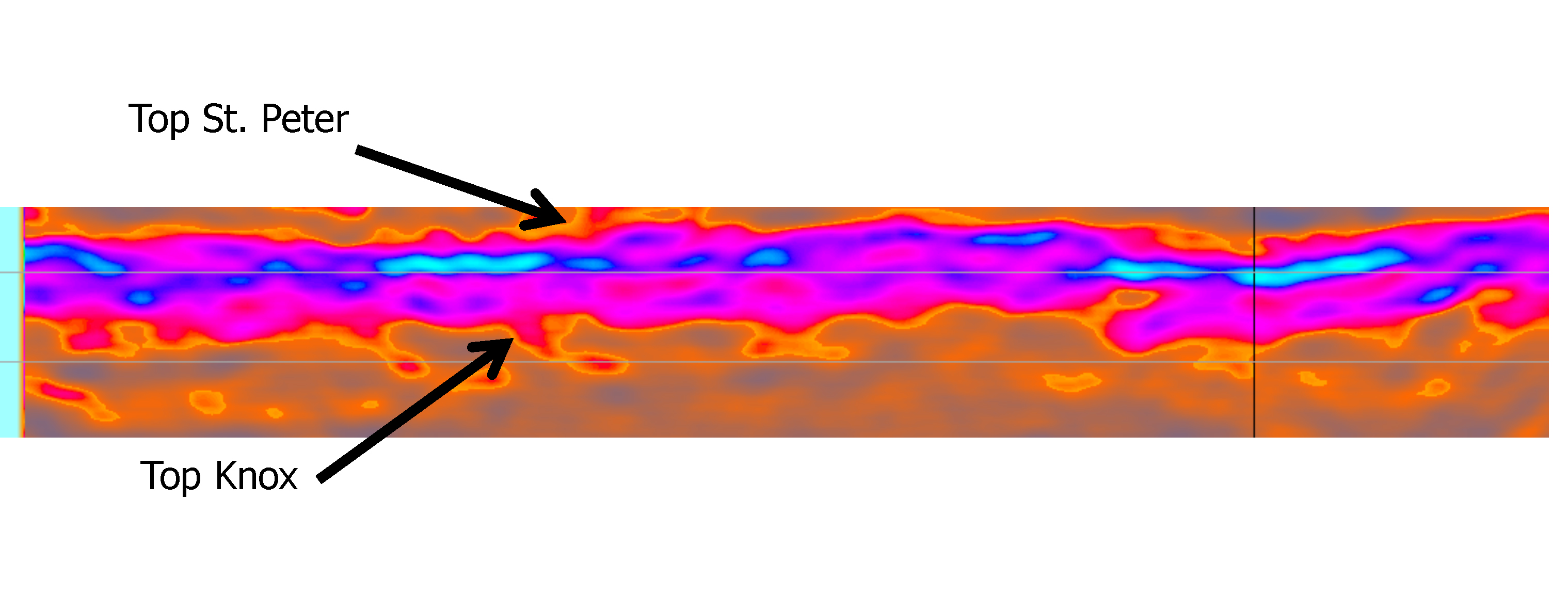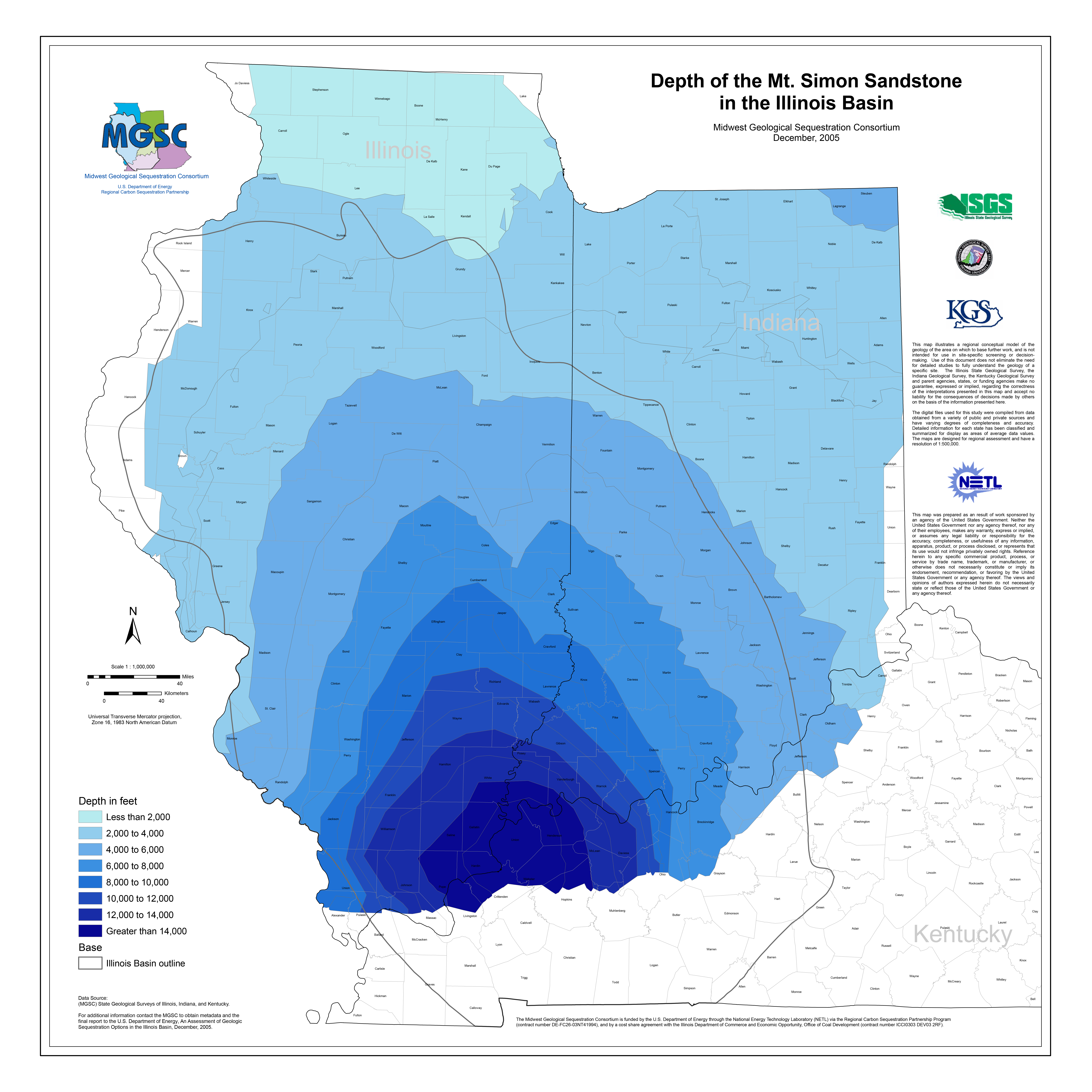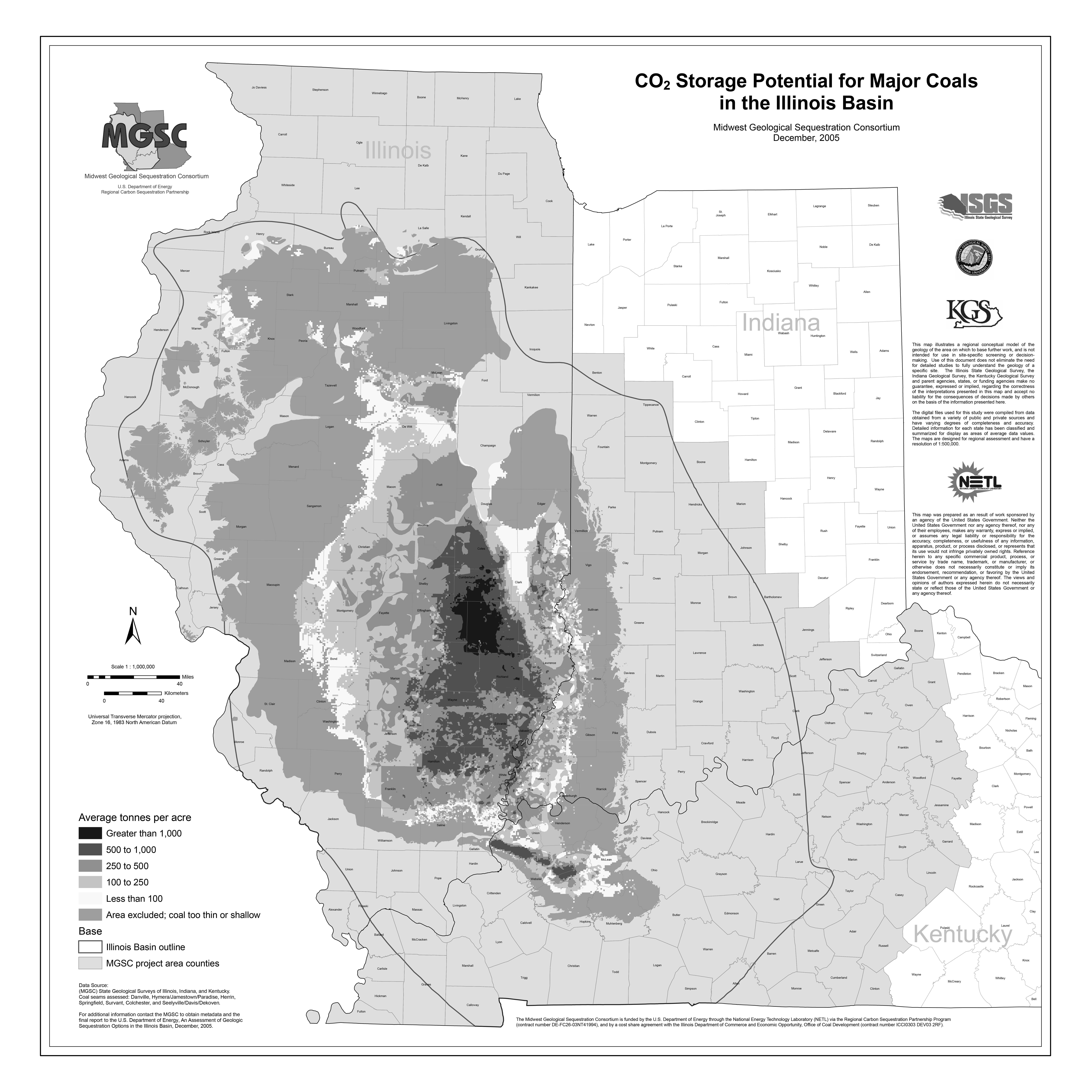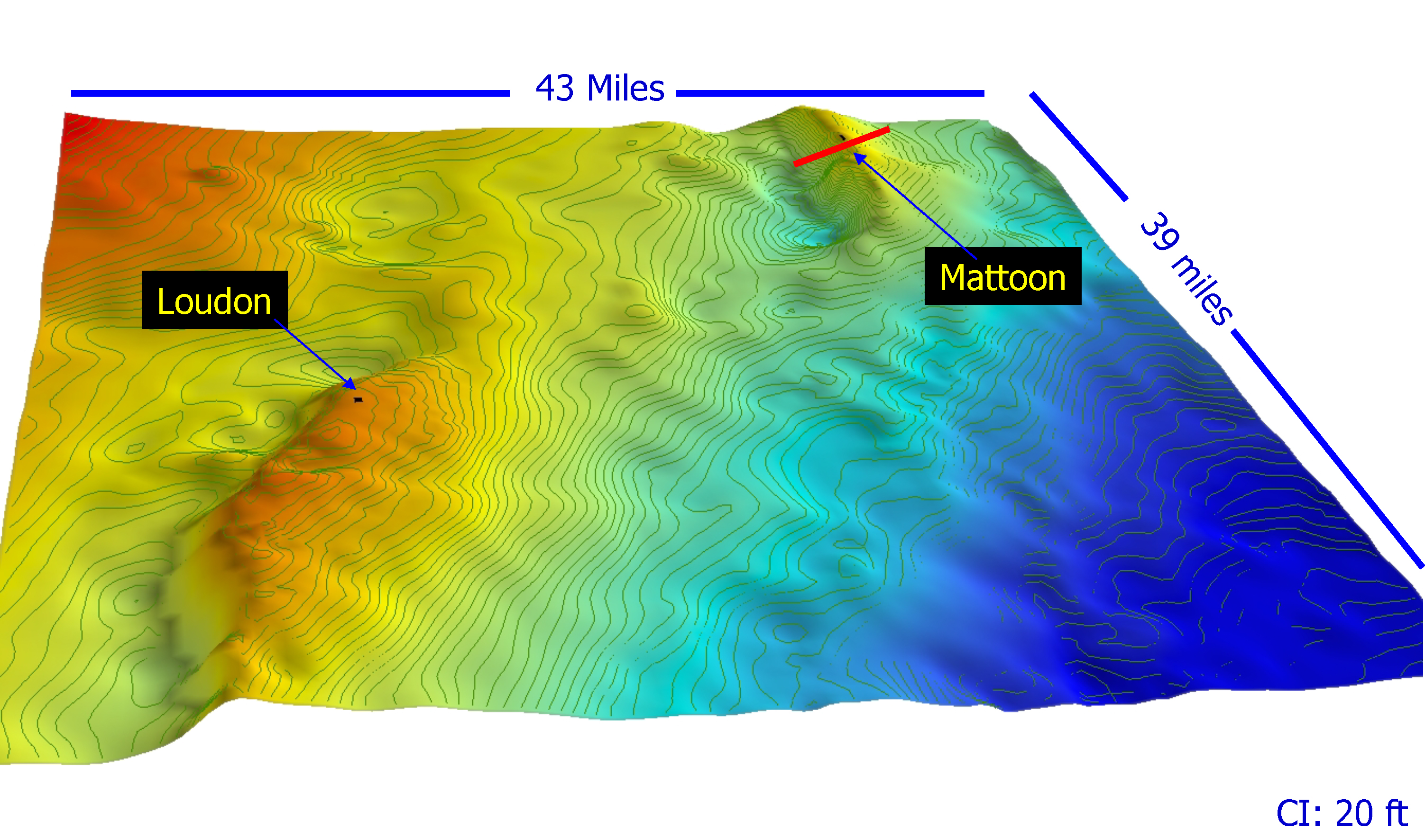Carbon Storage Atlas
Phase I Overview
The Illinois State Geological Survey, in conjunction with the Indiana and the Kentucky Geological Surveys, recognized that the geology of the Illinois Basin was potentially highly suitable for geologic storage of carbon dioxide (CO2). The Illinois Basin has oil fields, coalbeds, and regionally extensive saline reservoirs and seals. The Geological Surveys recognized the potential for Illinois Basin formations to be a valuable resource in geologic storage of CO2—and were eager to understand the nature of that resource and to demonstrate the ways in which CO2 storage could take place. The Midwest Geological Sequestration Consortium (MGSC) was formed to assess the viability of the CO2 storage resource in the Illinois Basin.
MGSC is the smallest of the seven regional partnerships, focusing on only three states (Illinois, Indiana, and Kentucky) that share a single geologic sedimentary basin. MGSC’s focus was on geologic storage within the Illinois Basin.
MGSC had the benefit of being established around the same time that the FutureGen project competition was underway. MGSC had a unique opportunity to engage with stakeholders from a variety of groups at both the government level and the regulatory level, as well as with the general public. MGSC held public meetings in grade schools, created models to explain geologic storage, and had town hall meetings surrounding the four proposed Illinois FutureGen sites. MGSC and FutureGen Illinois leveraged each other’s activities to share knowledge and inform many stakeholders about the potential for carbon storage in the region; local engagement impacted state-wide engagement and vice versa. In one particular instance, a meeting was held with local farmers, and MGSC learned how sophisticated farmers are as a stakeholder group in their understanding of the subsurface. The farming community asked some challenging questions—questions that MGSC scientists had asked themselves and were eager to research—such as: How do you know the CO2 stays where you put it? Will it impact my property value? What happens in the subsurface? Are you going to increase pressure in the subsurface? Farmers were very attuned to these questions and concerns because of their deep knowledge from working the earth.
Story of Intrest
The most surprising thing about the Midwest Geological Sequestration Consortium’s (MGSC) research has been the degree to which its research questions align with the public’s questions. Regardless of semantics, there is significant alignment between MGSC’s research and public concerns about safely storing carbon dioxide (CO2). Questions such as: Is there seismic activity associated with storage? Is it safe? Who pays for it? What are the environmental impacts? Those questions very closely mirror MGSC’s research questions, such as: How do you predict the behavior of CO2 in the subsurface? What are the best monitoring technologies? How do you monitor the deep subsurface, the shallow near-surface, and the atmosphere? Working together to answer these important questions drives the MGSC research.
Lessons Learned
Conducting Regional Assessments for Carbon Dioxide (CO2) Storage: The Midwest Geological Sequestration Consortium (MGSC) learned how to do a regional assessment that was specific to geologic storage, and created “stoplight” maps of where the most (and least) suitable geology was located based on select criteria.
Combining Physical and Social Site Characterization: It became clear throughout Phase I that there were going to be areas that were more suitable for carbon storage than others. Combining the geology with socio-economic and environmental considerations proved to be a useful tool in the assessment process.
Cultivating a Team of Experts: MGSC brought together a team of scientists, engineers, public policy makers, industry, academics, and others to assess carbon storage, as well as to start laying the groundwork for pilot- and large-scale storage projects. This team worked together to create workflows, execute assessments and project development in the field, operate projects, and conduct public engagement while contributing to evolving science and policy.
Conducting Public Engagement: MGSC learned a great deal about public engagement in Phase I. Working with the Regional Carbon Sequestration Partnerships (RCSPs), MGSC engaged at local, state, and national levels to create outreach materials for the partnership and to inform stakeholders. MGSC created engaging educational models and materials to visualize CO2 storage, participated in public meetings, and developed a website.
Creating Data Systems: Early in the development of MGSC, the regional characterization and potential long-term resource of data housed at the three geological surveys of Illinois, Indiana, and Kentucky were recognized as MGSC’s greatest asset. MGSC began to ask the questions of: What data did we have? What data did we need? What data would we need to be able to move from regional to site specific studies?
Links to EDX
An Assessment of Geological Carbon Sequestration Options in the Illinois Basin—Final Report.
The Midwest Geological Sequestration Consortium (MGSC) has investigated the options for geological carbon dioxide (CO2) storage in the 155,400-km2 (60,000-mi2) Illinois Basin. Within the basin, underlying most of Illinois, western Indiana, and western Kentucky, are relatively deeper and/or thinner coal resources, numerous mature oil fields, and deep saline reservoirs that are potentially capable of storing CO2. Assessing the options for capture, transportation, and storage of the CO2 emissions within the region has been a 12-task, 2-year process (October 1, 2003, through September 30, 2005) under Phase I of a U.S. Department of Energy (DOE)-funded Regional Carbon Sequestration Partnership (RCSP), with co-funding from the Illinois Office of Coal Development through the Illinois Clean Coal Institute (ICCI).
Partners

Ameren Corporation

American Air Liquide

Aventine Renewable Resources

Brigham Young University

Cinergy Corporation

D.J. Nyman & Associates

Electric Power Research Institute

Illinois Clean Coal Institute

Illinois Corn Growers Association

Illinois Department of Commerce and Economic Opportunity, Coal Development Office

Illinois Department of Natural Resources, Office of Scientific Research and Analysis

Illinois Oil and Gas Association, Kentucky Oil and Gas Association, and Indiana Oil and Gas Association
Illinois State Geological Survey (ISGS)

Indiana Geological Survey (IGS)

Interstate Oil and Gas Compact Commission

Kentucky Geological Survey (KGS)

Louisville Gas and Electric

Peabody Energy
Southern Illinois University

The Midwest Geological Sequestration Consortium (MGSC) is a consortium of three state geological surveys plus collaborating organizations










